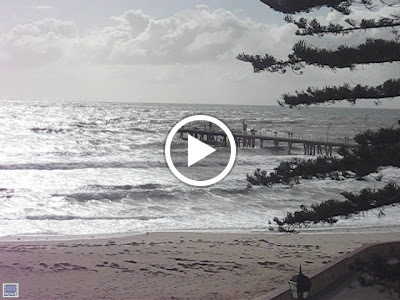This week's photohunt theme is bag.
This little joey may look comfortable in his bag, but he is probably missing mom, who was the victim of a reckless driver. Each year thousands of kangaroos and wallabies are killed by cars. Some of the victims are mothers, whose joeys--hidden the pouch-- survive the accident. Without human intervention the little animals would die. This guy was rescued on Kangaroo Island by Bev Turner at Emu Ridge Eucalyptus Distillery.
If you are driving in Australia and unfortunate enough to hit a kangaroo or wallaby the Kangaroo Protection Coalition suggest the doing following:
Watch for oncoming traffic, your personal safety is most important.
1. Check if the Kangaroo/Wallaby is still alive/dead.
2. If the Kangaroo/Wallaby is alive and injured, cover its face with a towel to quieten it. Gently place the Kangaroo/Wallaby in a hessian bay with a tie and place in the boot of your car. Take the Kangaroo/Wallaby immediately to the nearest Vet. If after hours, try the local newspaper, they usually have a wildlife carers contact details. there are moves afoot to get funding for a National freecall number.
3. If the Kangaroo/Wallaby is dead - remove the body from the road. Raptors come to the road to feed off the carcase, and are often killed themselves.
4. Check if it is a male/female.
5. If it is a female, check the pouch for a joey.
6. If a joey is present - check if it is furred or pink (no fur).
7. If furred - remove from the pouch and place in an artificial pouch or wrap in a T-shirt or other soft cloth.
8. If pink (no fur) - check if the teat is in the mouth. DO NOT PULL OFF THE TEAT as the palette is removed and death is a certainty. 9. Place a safely pin through the base of the teat so the joey can't swallow it, and cut the teat off. The teat will drop out of the joey's mouth after a few hours.
10. Remove the joey from the pouch and place in an artificial pouch (from kit) or wrap in a soft cloth.
11. Place inside your own shirt, next to your body for warmth until you get home.
12. At home, place the joey next to a hot water bottle or a plastic drink bottle filled with hot water that has been wrapped well in a towel. The joey needs to be kept warm (not too hot or allowed to go cold) awayfrom any loud noises.
13. Ring your State Govt. Department dealing with wildlife and ask them to refer you to your nearest wildlife organisation or experienced carer.


















































